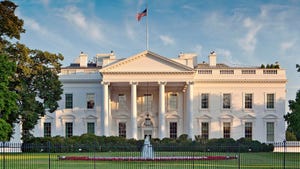U.S. beef exports shatter annual record
Current beef export success underscores the need to establish agreements with key trading partners.
March 9, 2019

U.S. beef exports blasted through previous records for value last year, according to 2018 statistics released by USDA and compiled by the U.S. Meat Export Federation (USMEF).
Beef export value last year was $8.33 billion, which was $1.06 billion more—15% more—than the previous record set a year earlier.
Beef export value per head of fed slaughter last year was also record high at $323.14, which was 13% more than the previous year and 8% more than the previous record set in 2014.
Exports also achieved a new high for volume—1.35 million metric tons (mt), which was 7% more than the previous year and 5% more than the previous record set in 2011.
Beef exports accounted for 13.5% of total beef production in 2018, which was 0.6% more than the previous year. Beef exports accounted for 11.1% for muscle cuts, up 0.7% from 2017.
Why trade negotiation matters
If you ever wondered about the potential impact of current trade negotiations, consider that South Korea accounted for half of the $1 billion surge in beef exports last year.
“There may have been no greater ag trade success story in 2018 than U.S. beef exports to Korea,” says Dan Halstrom, USMEF president and CEO. “Less than a decade removed from street protests opposing the reopening of this market, Koreans now consume more U.S. beef per capita than any international destination.”
This, Halstrom says, is a testament to the U.S. beef industry’s strong commitment to the Korean market and the outstanding support received from the U.S. government—through both USDA promotional funding and the negotiation of the Korea-U.S. Free Trade Agreement (KORUS), which has dramatically lowered import duties on U.S. beef.
Since KORUS was implemented in 2012, the import duty rate on U.S. beef declined from 40% to 18.7% and will fall to zero by 2026. U.S. beef’s main competitors also have free trade agreements with Korea but currently face higher duty rates than the U.S., including Australia (24%), Canada (26.6%) and New Zealand (26.6%).
Keep in mind that Japan is the leading destination for U.S. beef in terms of value; a little over $2 billion worth last year. Since exiting the Trans-Pacific Partnership, the U.S. has yet to establish a bilateral agreement.
Erin Borror, USMEF economist, emphasized Japan’s importance as a trading partner at the recent USDA Agricultural Outlook Forum. She cautioned that U.S. beef and pork face stiffer competition due to Japan’s preferential trade agreements with other trading partners. Unless the United States secures similar access terms, she says the situation will worsen.
About the Author(s)
You May Also Like


.png?width=300&auto=webp&quality=80&disable=upscale)


